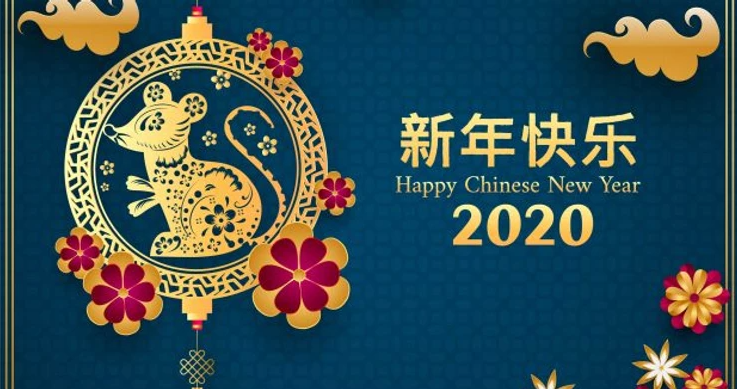Emerging Communications Senior Client Services Manager Marie Tulloch writes about the marketing opportunities around the Year of the Rat and how retailers and brands can get the most out of this Chinese New Year
Many have been considering using a mouse as a replacement to the more dubious rat. This is perfectly acceptable. In Chinese designs, there is often a high degree of ambiguity of which animal is being depicted, and younger consumers are more comfortable with the mouse theme as they have increased awareness of the negative connotations of rat in the English language.
Emerging Communications conducted its own poll of rat vs. mouse on Chinese information finding social media platform Zhihu, and of the 200 plus responses, more than 80% opted for a mouse. Not only are Chinese travellers likely to find mouse icons to be more tasteful , but there is no question casual Western observers of packaging and POS design will prefer this option.
But how much should zodiac images and other traditional symbols play a part in promotional messages during Chinese New Year?
A. Consumer targeting
Attempts to cash in on Chinese festivals are gaining increasingly negative responses in mainland China, and among overseas Chinese consumers. In fact, some of the most popular content pieces published by consumer Key Opinion Leaders (KOLs) and on Chinese media during Chinese New Year are lists of’CNY Fails’, or’Hot and Not’ lists showcasing faux-pas ranging from off-brand imagery to inappropriate wording. Campaign’fails’ by leading brands also fill the hot topics list on platforms such as Weibo and Zhihu .
Brands have to contend with Chinese audiences in the West such as students, expats and tourists, who are more critical of marketing efforts. Clumsy targeting by retailers and brands will not be forgiven in the way that it once was. Chinese audiences want innovation, playfulness , and the long-term use from CNY products, that are often gaudy and much too’on-the-nose’ to be used outside of the festive period.
For the uninitiated, the best way to approach CNY commercially is to consider it against Christmas, and how marketing is applied to that festival. Slapping images of Father Christmas and reindeer onto a product, or into a promotional campaign and hoping for the best is not going to impress. The same principle applies to the Lunar New Year.Chinese travellers are now acutely aware of their importance as shoppers, both collectively and individually, and they expect to be treated in a way that reflects the fact. No longer can retailers focus on style over substance as Chinese consumers overseas increasingly expect experiences and customer journeys on par with what they know from at home.
Chinese audiences want innovation, playfulness, and the long-term use from CNY products.
They welcome the flagging of New Year offers on social media, C-trip and Alipay pages, as well as digital or O2O and OMO activations they can share with friends. In-store, the use of Mandarin POS and Chinese speaking staff, plus localised payments and services is another key driver for Chinese consumers.
B. Effective marketing
We have seen a rise in C-beauty (Chinese beauty products) and fashion in 2019, and these trends will continue further in 2020. For foreign brands to compete they need to move conversations away from why their products are great, and show the benefits of their products for Chinese consumers specifically, how they cater to current key trends, or address common concerns.
Effective marketing, and a deep understanding of consumer behaviour and buying triggers provides consistent rewards in terms of sales, and also in creating customers that act as social media brand ambassadors – recommending services, products and stores to friends. This expectation, however, is not seasonal, and stores that for one or two weeks are clearly dedicated to the Chinese shopper then quickly drop their China focus post CNY can sour sentiment among frequent travellers.

The perceived Jekyll and Hyde approach to switching on and off Chinese communication and propositions can create a cynical impression of providing service only when the flow of money is at its height, and that the rest of the time Chinese travellers are not worth bothering with. Continuity is important, even if a limited budget means dialling back for CNY in order to win business at other times.
C. Understanding of’what works’
For some businesses there are extra benefits to this approach. Afterall, CNY is when competition for attention is at its most fierce, and Chinese platforms often have stricter controls when it comes to pushing out content, plus media costs for advertising as well as KOL fees increase substantially due to excess demand from marketers seeking to put all their eggs in one opportunistic basket.
The Chinese holiday calendar is increasingly complex with four Valentines’ days, Single’s Day, International Women’s Day , and Children’s Day being just a few of the widely celebrated events. As such, the twice a year approach most retailers take (CNY and Golden Week) , not only leaves brands caught in a battle to produce the best offer among many, but also means they miss out on year-round gifting activations, and the opportunity to build a more authentic connection with Chinese audiences.
For those focused on capitalising on the Lunar New Year, storytelling and a keen understanding of’what works’ in terms of aesthetics are two ways brands can succeed. This is something Chinese home-grown brands do exceptionally well, while Western brands increasingly work with Chinese designers, artists and KOLs to help ensure success.
This CNY begins a brand new cycle of the Chinese zodiac, while simultaneously ringing in a new decade. It is an opportunity for inspiration among duty free retailers worldwide to update their approach to Chinese consumer marketing to attract an ever larger, but increasingly aware audience.
Source: https://www.dfnionline.com/dfni-blog-comment/insight-chinese-new-year-year-rat-21-01-2020/




